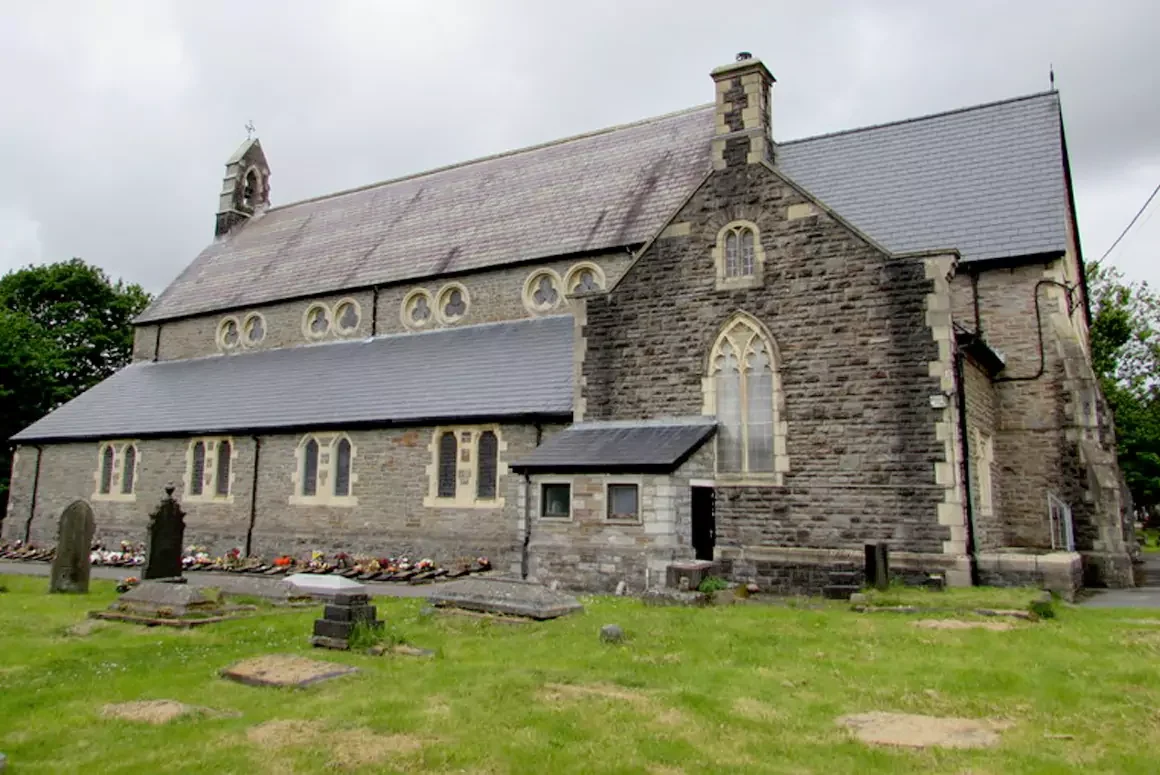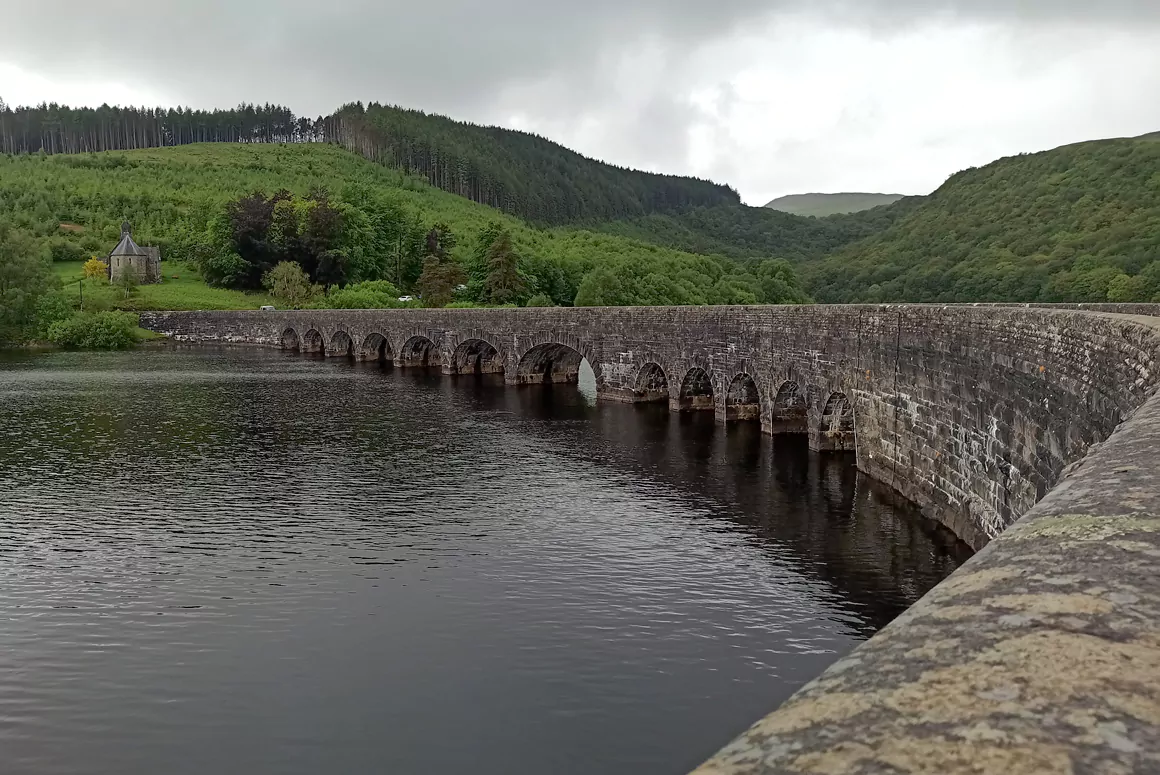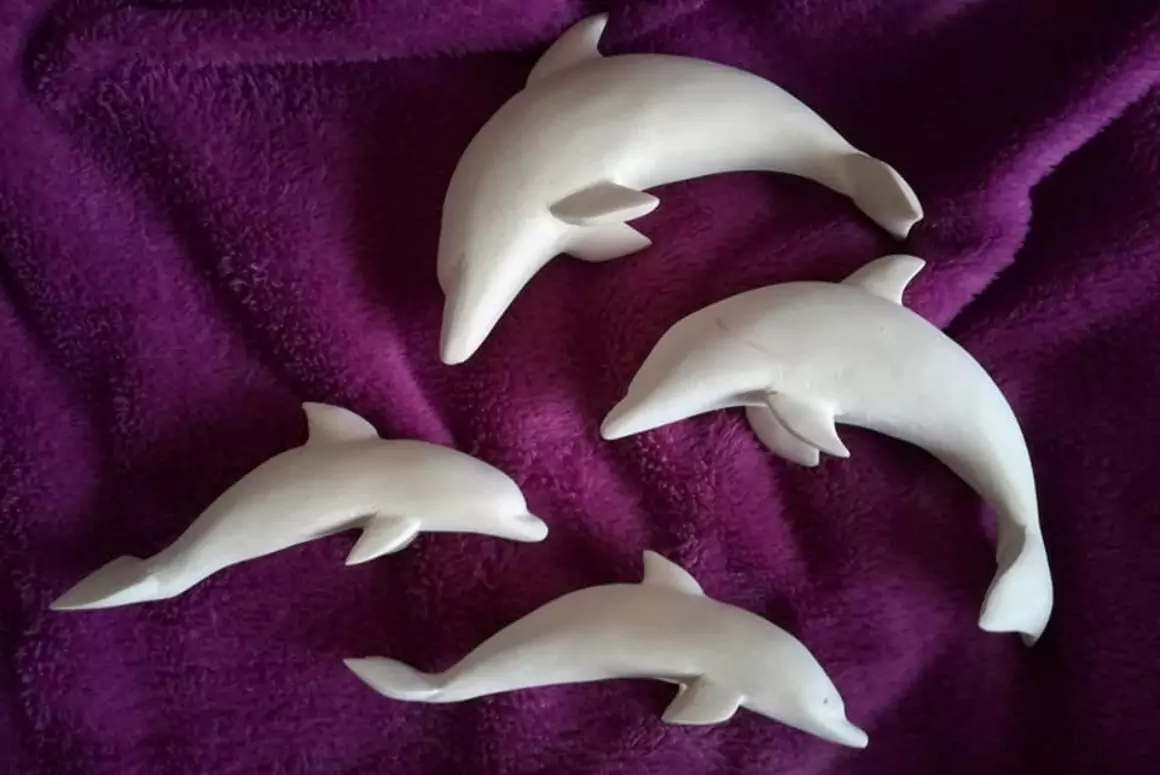Overcast skies hid the sun, but nothing dampened my joy as I stood in St. Cynog’s cemetery in Ystradgynlais, South Wales, admiring the graves of my great, great grandparents and other ancestors. The rectangular headstones, once upright, now lay flat. A little water and brushing revealed the Welsh inscriptions. “Er Cof Am Jennet Gwraig John James…” “In Memory of Jennet, Wife of John James,” my new friend, Caryl Jones, from the Ystradgynlais Family Historical Society, translated. Jennet, age 74, John, 82, their daughter Mary, 80, and her husband and son all lay buried below. In fact, I learned 92 Jameses were interred around the lovely stone church near the banks of the River Tawe.
John and Jennet’s son Herbert, my mother’s grandfather, left his parents and ten siblings around 1853, and crossed the Atlantic for a new home in Catasauqua, Lehigh County, Pennsylvania. Four of his children, including my grandmother, Jeannette James, lived to adulthood. Herbert worked in the Crane Iron Works, founded by David Thomas who brought new iron-making technology from the Ynyscedwyn Iron Works in Ystradgynlais to Pennsylvania in 1839.
Ironically, only ruins remain of both companies. In Wales, the silent furnace stacks still stretch to the sky in what is now a park. Yards away, a weather- beaten plaque caught my eye. “…Mr. David Thomas…took his successful hot blast furnace method to Pennsylvania…and greatly influenced the iron industry in the Lehigh Valley.” Such a stunning connection to home!
Finding my way to Ystradgynlais (uhs-trud-GUN-lice) wasn’t easy. I knew very little about my Welsh heritage, and tracing my roots proved a daunting and often frustrating task. By happy chance I discovered the WSWNE Genealogy Group on Zoom. Its members welcomed this Pennsylvania girl and shared invaluable tips and advice. They told me most areas in Wales have a Family Heritage Society. That guidance led me to Caryl Jones who became my research colleague, tour guide, and cheerful Welsh companion when I visited in 2023.
Long before I joined the Zoom group, I made some clumsy attempts at genealogy. My uncle did some research before the days of PCs. He said Herbert came from Merthyr Tydfil. I started with that fact when I joined Ancestry.com in its infancy. “Eureka,” I thought. “I found Herbert in Merthyr Tydfil.” His dates seemed a little off, but how many Herbert Jameses could there be?
I hear my Zoom friends chuckling. Now I know that like all Welsh names, there are oodles of them.
I tackled my research anew, but I quickly hit an obstacle. I confidently placed Merthyr Tydfil Herbert on my tree. From the census data, I added his father, Job, and several siblings. But one fateful afternoon I found a newspaper clipping from the Merthyr Express in 1910. The article reported Miss Cecilia James, sister of my assumed Herbert, left an estate of almost £13,000 to a foundation. Moreover, Job had been a surgeon, and several brothers trained as lawyers. My enthusiasm ground to a halt. I didn’t know a lot about my ancestors, but I knew they were salt of the earth laborers, not educated folks with money. “These are not my people,” I sighed. I searched for a different Herbert James in Merthyr Tydfil, but came up empty. Frustrated, I almost gave up. Then it hit me. What if Herbert didn’t actually hail from Merthyr Tydfil?

I switched gears. I knew Herbert had served in the US Civil War. Surely there were army documents that included his birthplace. I searched the collection of military records on Ancestry. There I found his birthplace in the U.S. Army Register of Enlistments, 1859-1862. The faded handwriting was difficult to decipher. I enlarged it, darkened it and stared at it for quite a while until I saw it – Breconshire – the historic name for a county in southeastern Wales.
From then on, things fell into place. I found John and Jennet in Ystradgynlais and their extended family filled with Herberts and Jennets. That was especially convincing because my Herbert named his daughter Jeannette; she, in turn, christened her first born, my aunt, Jeannette. But why the spelling change? I remembered my mother telling us the Presbyterian minister considered Jennet (or Janet) a nickname. I found my people!
Caryl sent me the church records and a listing of area families another historian had compiled. I sent her the census data that showed four places where the family lived up to the 1870s. When I visited with my guide, Caryl jumped in the van and directed us to all of them. She was amazing. Without her help, I never would have found them!
I had traced the family back to 1728, when they lived as tenant farmers on an estate called Tir Morgan Taylor on the outskirts of Ystradgynlais. James ab John paid annual rent of £5 and became the first to bestow on his children the surname James. We drove down a one-lane road, praying for no oncoming traffic, and arrived at a non-descript, gated property. There was nothing to see, but as I stood on the gravel road, I imagined my forefathers hauling goods down the hill and making the best of their hardscrabble lives.
By late afternoon we drove home through lovely Ystradgynlais. On either side, quaint shops lined the street, much as they did in my great grandfather’s time. I said a silent farewell to the places we visited: the hardware store for a scrub brush; the flower shop for a cemetery bouquet; and, of course, St. Cynog’s cemetery, where I thanked my ancestors for their legacy passed down to me.
Words: Jane Llewellyn Allison
Reprinted from Croeso, the newsletter of The Welsh Society of Western New England
Feature image: St Cynog’s Church, Ystradgynlais © Jaggery (CC BY-SA 2.0).



![Ynyscedwyn Iron Works, Ystradgynlais Ynyscedwyn Iron Works in Ystradgynlais [Photo: Chris Andrews - CC BY-SA 2.0]](https://www.welshcountry.co.uk/wp-content/uploads/2024/11/Ynyscedwyn_Iron_Works.webp)



